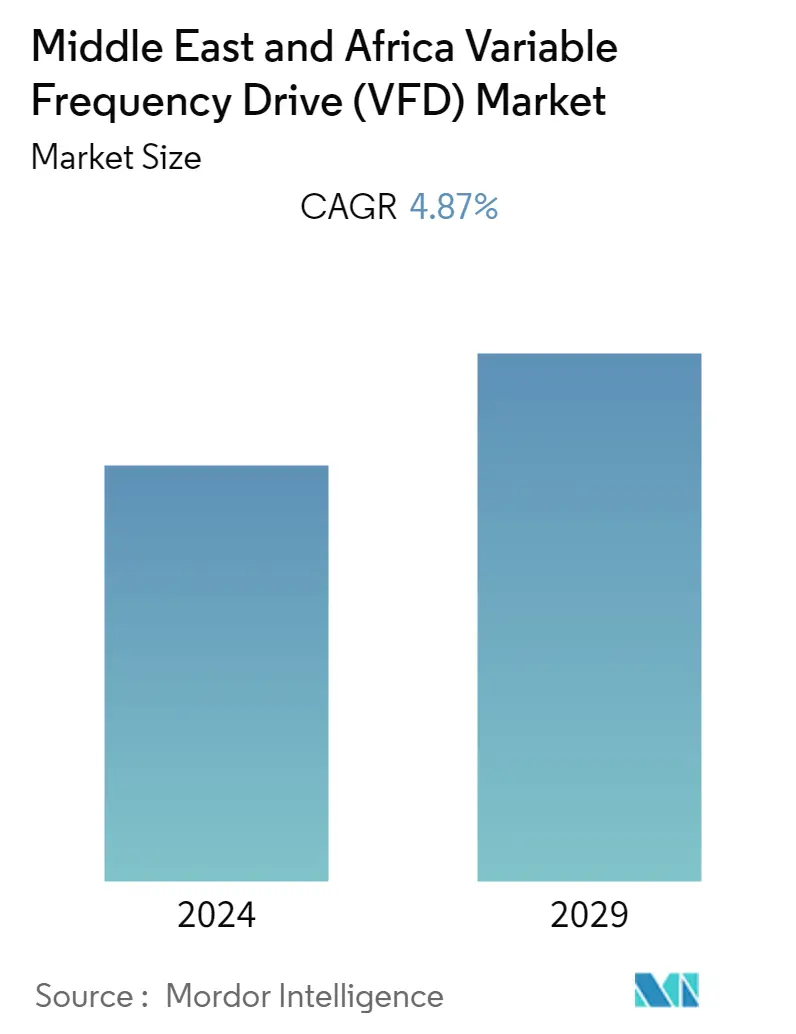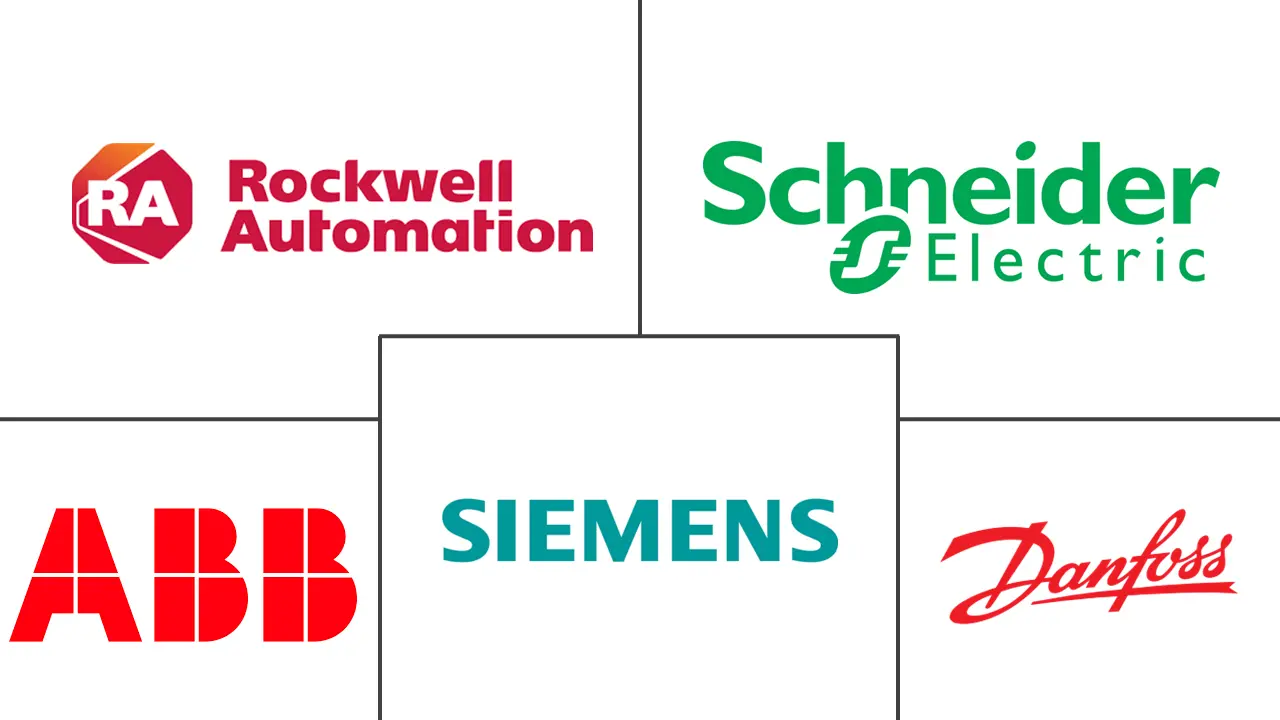Market Size of Middle East & Africa Variable Frequency Drive (VFD) Industry

| Study Period | 2019 - 2029 |
| Base Year For Estimation | 2023 |
| Forecast Data Period | 2024 - 2029 |
| Historical Data Period | 2019 - 2022 |
| CAGR | 4.87 % |
| Market Concentration | Medium |
Major Players
*Disclaimer: Major Players sorted in no particular order |
Need a report that reflects how COVID-19 has impacted this market and its growth?
MEA Variable Frequency Drive (VFD) Market Analysis
The Middle East & Africa Variable Frequency Drive (VFD) Market is expected to register a CAGR of 4.87% during the forecast period (2022-2027). The Middle East and Africa is one of the prominent markets for variable frequency drives. Several advantages offered by VFDs, such as intelligent motor control, energy savings, and reduction of the peak-current drawn, stand to be some of the major reasons for the high penetration of these drives in various end-user industries of the region. Not only energy efficiency but the popularity of VFDs can also be attributed to their capacity to increase motor life and further reduce motor maintenance by allowing distributed use across the lifecycle, relieving it from constant use under the same parameters.
- Rapid technological advancement has led to higher acceptability of the drives in several industries. The advances focus on high reliability and reduced energy costs, potentially reducing the per square foot energy by 30-40% when equipped with motor-driven systems in commercial buildings. Additionally, the advanced and modern drives integrate the networking and diagnostic capabilities into better performance and increased productivity. Intelligent motor control and reduction of peak-current drawn are some of the major reasons to choose a VFD as the controller in every motor-driven system.
- Water scarcity is one of the major problems in the region. This is due to various factors such as climate change leading to droughts and floods, low water quality, and poor water management in conflict and violence. One of the popular ways to supplement insufficient water supply is to separate salt from seawater, called desalination. The Middle East & North Africa accounts for nearly half of the world's desalination capacity, as per the World Bank, making it the largest desalination market. Many desalinated plants in the region, such as in the UAE, are built on the independent water and power producer model. Kuwait has also planned to build eight facilities capable of desalinating seawater by 2025 to meet the growing water needs. These investments will also propel the demand for VFDs as they offer a reliable and cost-efficient solution to ensure precise control of torque and speed of rotating machines (such as pumps, etc.) in desalinated plants.
- To ensure efficient and reliable pumping, in June 2021, Saline Water Conversion Corporation's (SWCC) water treatment plant in Jubail, Saudi Arabia, announced that it would use ABB's digitally enabled-ACS2000 medium voltage variable speed drives (VSD) to reduce energy consumption and lower their total cost of ownership. The plant, which would have a daily output capacity of 400,000 m3/day of clean water, would be one of the largest projects in the region, designed to meet the future water needs of Riyadh and other cities such as Dammam, Khobar, and Jubail.
- For heating, ventilation, and air-conditioning systems used in the commercial and industrial sector, the Variable Frequency Drives find wide usage as they can handle the variable load in several components, like chillers. The VFD helps allow peak capacity to meet the high demands of peak loads in constant flow HVAC systems and then slowly control the energy by decreasing the need for the load.
- On the flip side, adding VFDs to existing motors gives rise to several technical problems, creating barriers to adoption amongst several industry players. After integrating the VFD with an existing motor, the motor shaft speed decreases, which causes decreased cooling from the safe-driven fan. The primary issue the engineers are experiencing in using a VFD is bearing failure. Many engineers have reported a reduced lifecycle of the bearings in the motors controlled by modern VFDs. The bearing is seen arcing from the bearing race to the bearing itself, creating a tracking within the bearing, which leads to an unexpected failure. The regular failure of the bearings increases their maintenance costs. VFD produces harmonic current from the output of the inverter. These harmonics can harm the motor itself and, unless properly mitigated, resonate across the larger electrical power system. These harmonics cause over-heating and torque oscillations in the rotor, leading to mechanical resonance and vibration. This eventually leads to a shortening of the motor life. These factors, when coupled with the high equipment and maintenance cost, can restrain the studied market's growth.
